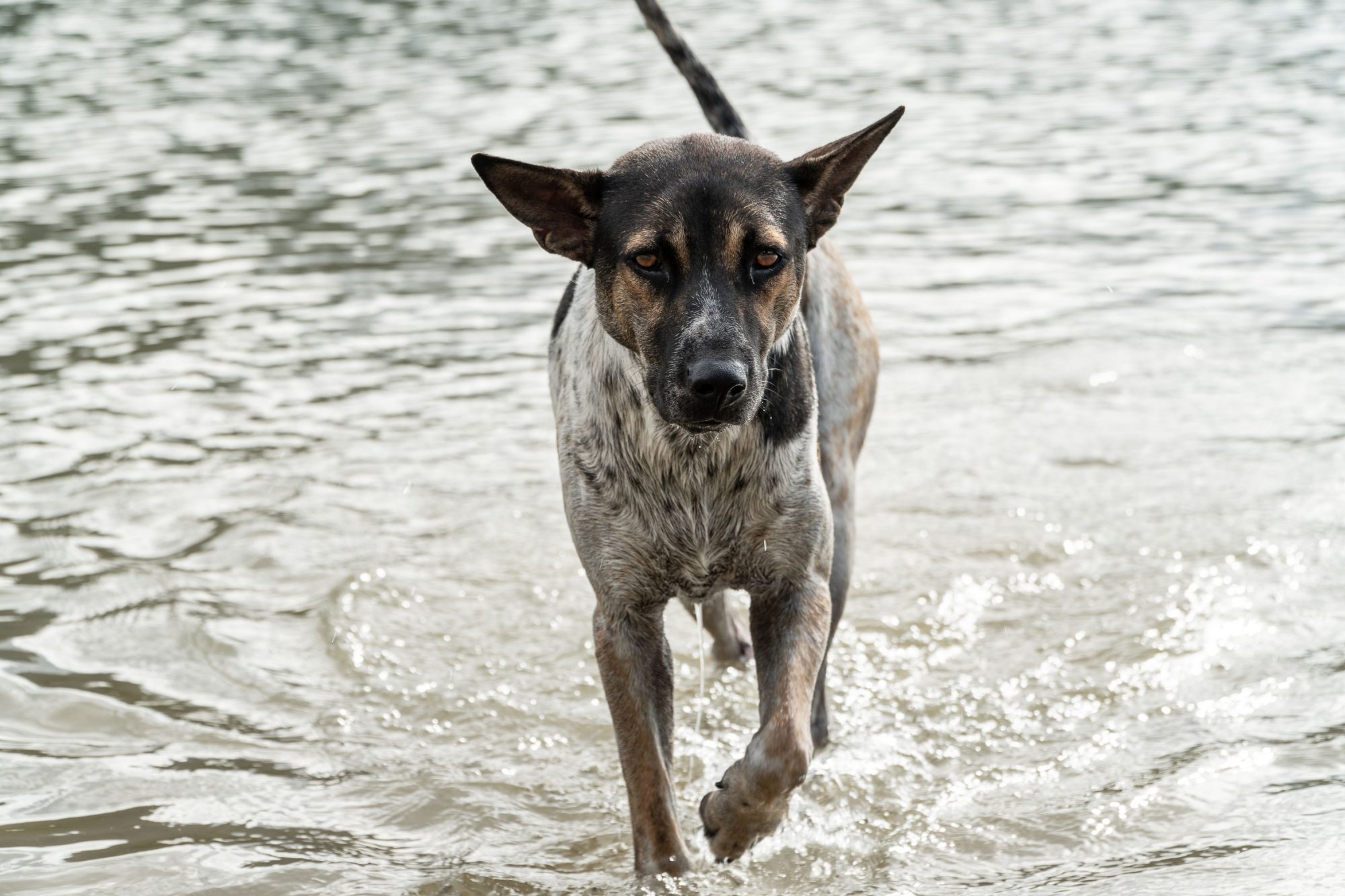The Danger of Leptospirosis in Dogs

Leptospirosis is a disease caused by Leptospira bacteria, which are found worldwide in soil and water. Numerous strains of these bacteria can cause illness, affecting a wide range of mammals, including dogs, people, livestock, and certain wildlife. While cats can also get sick, such cases are rare.
The Leptospirosis vaccine a core part of our dog vaccination program after reports of the disease emerged in Colorado. We took this step due to the risk it poses to dogs and its potential to spread to humans.
How Do Dogs Get Infected?
Leptospirosis is a bacterial infection. It causes serious illness by damaging important organs such as the liver and kidneys. It spreads in urine and can live in water or soil for months. Leptospirosis enters the body through the mouth, nose or wounds.
The primary source of leptospirosis infection in dogs is exposure to environments where infected animals have urinated, including:
- Drinking contaminated water: Leptospira bacteria can survive in stagnant water, such as ponds, lakes, and puddles.
- Walking through contaminated soil: The bacteria can be present in soil contaminated with urine.
- Contact with infected animals: Dogs can become infected through contact with the urine or tissues of infected animals, such as rodents, raccoons, and farm animals.
- Bites from infected animals: Although rare, leptospirosis can be transmitted through the bite of an infected animal.
- Congenital transmission: Puppies can be born with leptospirosis if their mothers are infected during pregnancy.
Why Worry About This
Once inside the body, the Leptospira bacteria travel to the kidneys and cause a variety of problems, including, serious inflammation that can spread to the liver, lungs, eyes, spleen central nervous system and genital tract. If left untreated, the infection can also cause kidney and liver failure. In the worst cases, a leptospirosis infection can be fatal.
It’s in Our Environment
Carried by rodents (mice, rats, squirrels), wildlife, livestock, and infected dogs, Leptospira bacteria can be present anywhere there is dampness or standing water, regardless of how much. Humidity and mud also contribute to an ideal environment for the bacteria to survive. Infected animals, including dogs, can transmit leptospirosis, even if they show no outward symptoms of the disease.
Leptospirosis ranks as the most common zoonotic disease worldwide, with researchers identifying over 200 strains of Leptospira bacteria. In regions where dogs aren’t widely vaccinated, infections occur fairly often.
Symptoms of Leptospirosis Infection
Leptospirosis symptoms in dogs can mimic other illnesses. However, any of the following symptoms could indicate a Leptospirosis infection. Take them seriously and schedule an immediate check-up with your veterinarian.
- Lethargy
- Vomiting
- Diarrhea
- Frequent urination
- Dehydration
- Loss of appetite
- Tender muscles
- Jaundice (yellowish gums or skin tone)
- Shivering
- Swelling
- Fever
- Abnormal bleeding
Whether your dog shows one symptom or several, addressing symptoms early on is imperative! If symptoms persist without treatment, they will progress to severe illness, suffering, and death. You, other household members and dogs are also at risk for contracting the disease.
Medical Treatment
Depending on the severity of the Leptospirosis infection, a treatment plan may involve several approaches. Antibiotics, fluid therapy, oxygen therapy, close monitoring, and other supportive care are some of the treatment options. In severe cases, veterinarians may require hospitalization and 24-hour care. Your veterinarian may also prescribe antibiotics for other dogs in the household, assuming they were likely exposed to both the infected dog and the original source of Leptospirosis contamination.
Caring For Your Dog at Home
Because the illness can spread to humans through saliva, urine, and other bodily fluids, take the following precautions when providing home care:
- Quarantine the infected dog in a separate room, away from other pets and family members.
- Assign one member of the household (preferably an adult) to care for the dog.
- Avoid direct contact with the infected dog’s saliva, urine and mucus membranes.
- Use disposable gloves when handling the dog or any items used by the dog, including, food, water, feeding bowls and bedding.
- Wash hands thoroughly with soap and water after contact with the dog, and clean shared surfaces using pet safe disinfectant soaps, cleaners, and wipes.
- Launder the dog’s bedding and blankets with detergent and hot water.
- Give all medications/treatments as prescribed by your veterinarian.
- Closely monitor the dog for changes or worsening of symptoms, and contact your veterinarian if the dog is not improving.
- Monitor other dogs in the household for symptoms and, if observed, contact your veterinarian immediately, as the dogs will also need treatment for the disease.
Preventing Leptospirosis
It is difficult to know where or when in the outdoor environment a dog may be exposed to Leptospirosis contamination or to another animal that is infected. Consequently, the best line of defense is through vaccination, even if a dog resides primarily indoors.
The vaccination protocol for Leptospirosis that we follow at our facility is to administer one initial vaccine dose, followed by a second booster dose 3 to 4 weeks later (the second dose is necessary within this time frame for the vaccine to be effective). Veterinarians recommend an annual booster vaccination to maintain ongoing protection.
It is important to note that, as with the administration of any vaccine, we require a physical exam with our veterinarian prior to vaccination for Leptospirosis. Further, since any vaccine can pose the risk of a reaction – although uncommon in most dogs – this should still be discussed with your veterinarian prior to the vaccine being given.
If you have questions or concerns about Leptospirosis or your dog’s vaccination status, please contact us. Our team is here to help!



